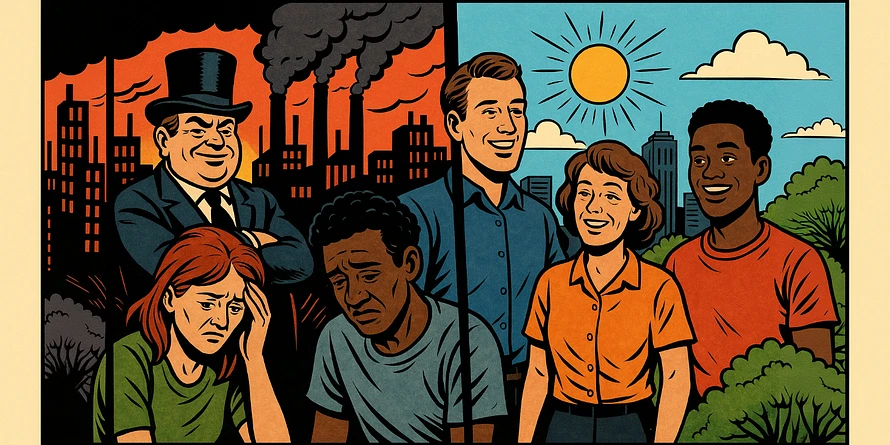Not All Systems Are Bad: How to Tell the Difference
NOTE: I am moving my blog to Substack. Most of my posts I have just transferred directly, this one I made substantial improvements to, so I am leaving the original here. You can read the upgraded version here.
When people hear about "resisting the system," it’s easy to imagine a call for chaos — to tear everything down and leave nothing behind.
But real resistance isn't about mindless destruction.
It’s about liberation.
It’s about discernment.
Not all systems are bad.
Systems can be powerful forces for good — or devastating engines of harm.
The difference lies in one question:
Does the system uplift and empower everyone — or does it serve only a select few at the expense of the many?
🌱 What Good Systems Do
A good system strengthens dignity.
It supports freedom.
It lifts the vulnerable and protects the common good.
It allows individuals to thrive without crushing others to do so.
Examples of good systems include:
-
Public libraries: providing free access to knowledge for all
-
Clean water infrastructure: ensuring a basic human need is met for everyone, not just the wealthy
-
Universal healthcare systems: offering care based on human need, not profit
-
Democratic governance: when truly representative, protecting the rights and voices of all citizens equally
Good systems expand human potential.
They are built on the principles of equity, access, empowerment, and shared stewardship.
🔥 What Broken Systems Do
A broken or harmful system is easy to spot when you know what to look for:
-
It concentrates power and wealth into the hands of a few.
-
It silences or punishes dissent.
-
It thrives on inequality, shame, fear, and manipulation.
-
It demands obedience, not participation.
-
It treats humans as resources to be exploited, not lives to be respected.
Examples of harmful systems include:
-
Corporate monopolies: extracting wealth while crushing workers and communities
-
Racist legal systems: maintaining inequality through biased policing and sentencing
-
Religious authoritarianism: using shame and fear to control personal autonomy
-
Surveillance capitalism: turning human attention and privacy into commodities for profit
These systems don't just fail to uplift —
they actively crush human dignity for the benefit of a privileged few.
🧠 How to Tell the Difference
When you encounter any system — a law, a workplace policy, a religious institution, a school rule — ask yourself:
-
Who benefits most from this?
-
Who is excluded, punished, or left out?
-
Does this system make life freer, fairer, and more dignified for everyone? Or does it protect the powerful and abandon the vulnerable?
-
Is participation voluntary and informed — or coerced and hidden behind fear?
Good systems welcome scrutiny and reform.
Bad systems fear exposure and silence critics.
Good systems trust people to own their lives.
Bad systems demand obedience to protect the status quo.
✊ Why This Matters for Resistance
If we want to build a better world, we can't just tear down blindly.
We must discriminate wisely between what deserves to be protected and what must be dismantled.
Resistance isn’t about rejecting systems.
It’s about rejecting systems of domination — and choosing systems of dignity instead.
The future we fight for isn't just the absence of oppression.
It’s the presence of justice, equity, freedom, and mutual respect.
🌟 In the End
Systems aren’t automatically bad.
But every system must be judged — not by its slogans, not by its surface — but by its impact.
If a system uplifts only a few at the cost of the many,
it must be resisted.
If it uplifts all in dignity and freedom,
it must be protected, strengthened, and evolved.
The real revolution isn’t chaos.
It’s conscious creation.
And it starts with the courage to ask:
Who does this system serve?
And is that the future we want?
